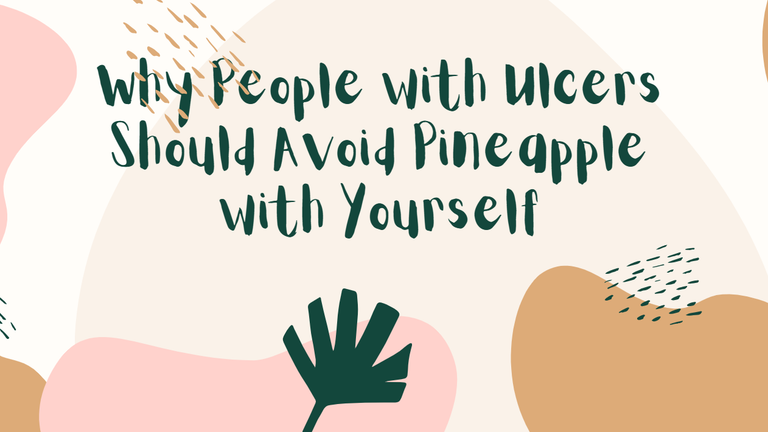Living with an ulcer has completely changed the way I think about food. Gone are the days when I could eat whatever I wanted without a second thought. Now, every meal feels like a careful balancing act—choosing foods that won’t aggravate my stomach while still trying to enjoy what I eat. One food I’ve had to cut out completely is pineapple, and let me tell you, it wasn’t easy. I wrote about how I feel great now away from ulcer symptoms a few days ago. Staying away from pineapple is one of the reasons this feat was achieved.
Why did I stay away? Come along with me.
The Acidic Awakening
I used to love pineapple. Its sweet, tangy flavor was like a tropical vacation in every bite, and they come quite cheap here in Southwestern Nigeria. I can practically grow and harvest them in my backyard with minimal effort. But after my ulcer diagnosis, I quickly learned that pineapple’s acidity was my stomach’s worst enemy.
One evening during the early days of my symptoms, I decided to treat myself to a small bowl of fresh pineapple. Within minutes, I felt that familiar burning sensation in my stomach, followed by a sharp pain that left me curled up on the couch for hours. It was a harsh realization that even a little pineapple may be too much for my sensitive stomach.
Bromelain: A Double-Edged Sword
I’d always heard that pineapple was good for digestion because of an enzyme called bromelain. But what I didn’t realize was that bromelain could actually make things worse for someone with an ulcer. My doctor explained that bromelain breaks down proteins, which might sound helpful, but it can also wear away at the protective mucus lining in my stomach. Without that lining, my ulcer was even more exposed to stomach acid, making the pain unbearable. After that, I started reading food labels carefully to avoid anything with bromelain, including some supplements and juices.

The Texture Trouble
It’s not just the acidity or the bromelain, it’s also the texture. Pineapple is fibrous, and those tiny, tough strands felt like they were scratching at my already irritated stomach lining. Dietary recommendations by the American College of Gastroenterology for peptic ulcers suggest avoiding foods that cause discomfort, including those with rough or fibrous textures.
I remember eating a slice and feeling like it was physically irritating me from the inside. It was such an uncomfortable feeling that I knew I had to stop eating it altogether even before discovering that it is medically not recommended.
Heartburn Hell
Even if I managed to get through the initial pain, pineapple would often trigger heartburn later in the day. The acid reflux was brutal. I’d feel that sour taste in the back of my throat, and no amount of antacids seemed to help. It got to the point where I dreaded nighttime because I knew the heartburn would keep me awake. Days after taking pineapple, I'd still be suffering from serious heartburn.
What I Eat Instead
Giving up pineapple was tough, but I’ve found some great alternatives that don’t upset my stomach. Bananas have become my go-to snack. They’re soft, low in acid, and actually help neutralize stomach acid. Oatmeal is another lifesaver; it’s soothing and fills me up without causing any pain. I’ve also started eating more leafy greens and probiotic-rich foods like yogurt, which have helped my stomach heal over time.
A Lesson Learned
Living with an ulcer has taught me to listen to my body and make smarter food choices. While I miss pineapple, I don’t miss the pain it caused me. These days, I’m much more careful about what I eat, and my stomach thanks me for it. If you’re dealing with an ulcer, I’d recommend avoiding pineapple altogether. Tt’s just not worth the discomfort. Trust me, your stomach will thank you.
If you’re struggling with an ulcer, I’d love to hear your experiences. What foods have you had to give up, and what’s helped you manage your symptoms? Let’s share tips and support each other on this journey to better digestive health.
Posted Using INLEO
That sounds really painful. Can your ulcer heal if you avoid aggravating it?
Yes. It heals naturally if not aggravated just like a physical wound. If you keep aggravating it, no drug can actually save you.
Thanks for your contribution to the STEMsocial community. Feel free to join us on discord to get to know the rest of us!
Please consider delegating to the @stemsocial account (85% of the curation rewards are returned).
You may also include @stemsocial as a beneficiary of the rewards of this post to get a stronger support.